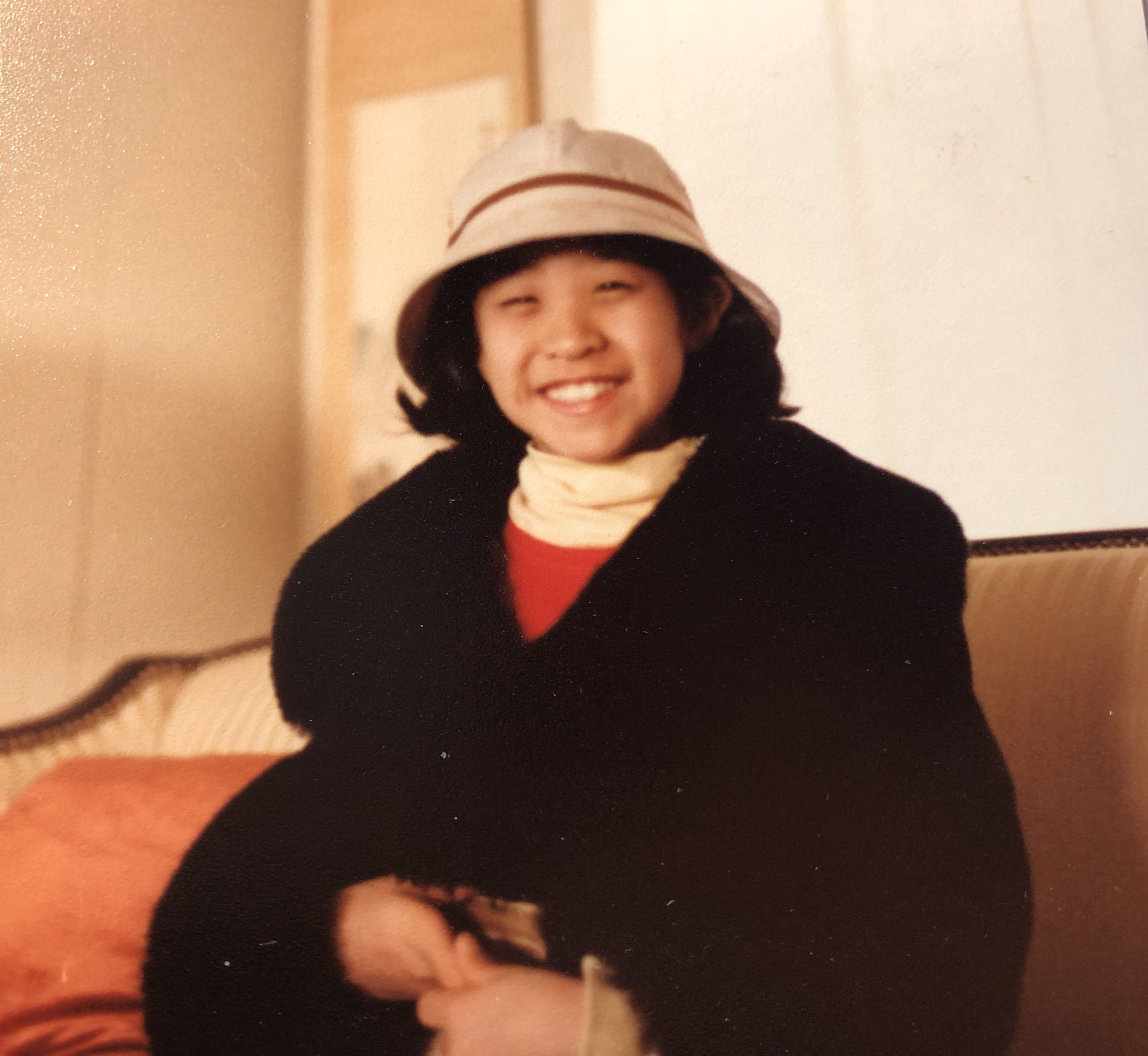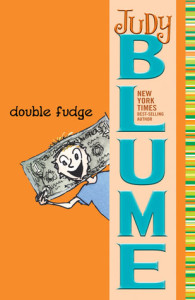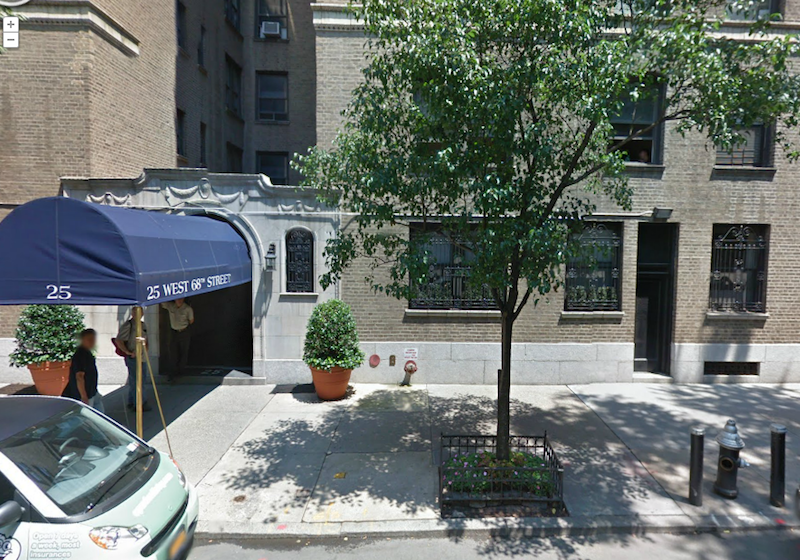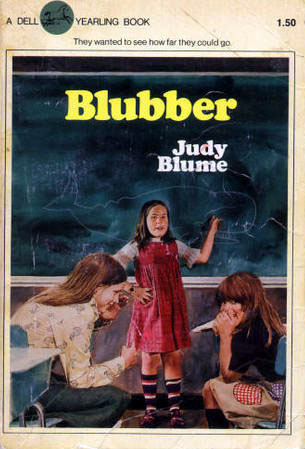 I’m not sure why I never read Blubber when I was a kid. But the other night I finally picked it up and yow. While I can’t say it’s an enjoyable 153 pages, it’s brilliant and fascinating on multiple levels, from the details of everyday suburban life in the 1970s to the jaw-dropping brutality of the fifth-graders at the center of the story. The novel is definitely worth a read, if only to remind yourself that while many aspects of childhood have changed (these kids have an unsupervised lunch period at school, for instance, giving them the perfect opportunity to torture Linda) other things remain the same: Nice fifth grade girls from nice families can seem totally normal while being secretly sadistic torturers. It is psychologically dead-on.
I’m not sure why I never read Blubber when I was a kid. But the other night I finally picked it up and yow. While I can’t say it’s an enjoyable 153 pages, it’s brilliant and fascinating on multiple levels, from the details of everyday suburban life in the 1970s to the jaw-dropping brutality of the fifth-graders at the center of the story. The novel is definitely worth a read, if only to remind yourself that while many aspects of childhood have changed (these kids have an unsupervised lunch period at school, for instance, giving them the perfect opportunity to torture Linda) other things remain the same: Nice fifth grade girls from nice families can seem totally normal while being secretly sadistic torturers. It is psychologically dead-on.
I don’t usually mark up my books, but I did it this time because 1) I knew I was never going to read Blubber again and 2) It’s the kind of book where you find yourself muttering out loud. Circling sentences and scribbling things like “Holy Shit!” on the newsprint-soft pages of an old paperback with an Uni-Ball pen can be oddly satisfying.
Tracy Wu!
Tracy Wu, Jill’s best friend, is depicted as utterly unexotic. Daughter of local physician Dr. Wu (naturally), Tracy collects stamps, eats hot dogs and lives in fear of getting on bully Wendy’s bad side — just like Jill. For a book written in the 1970s, this is totally refreshing.
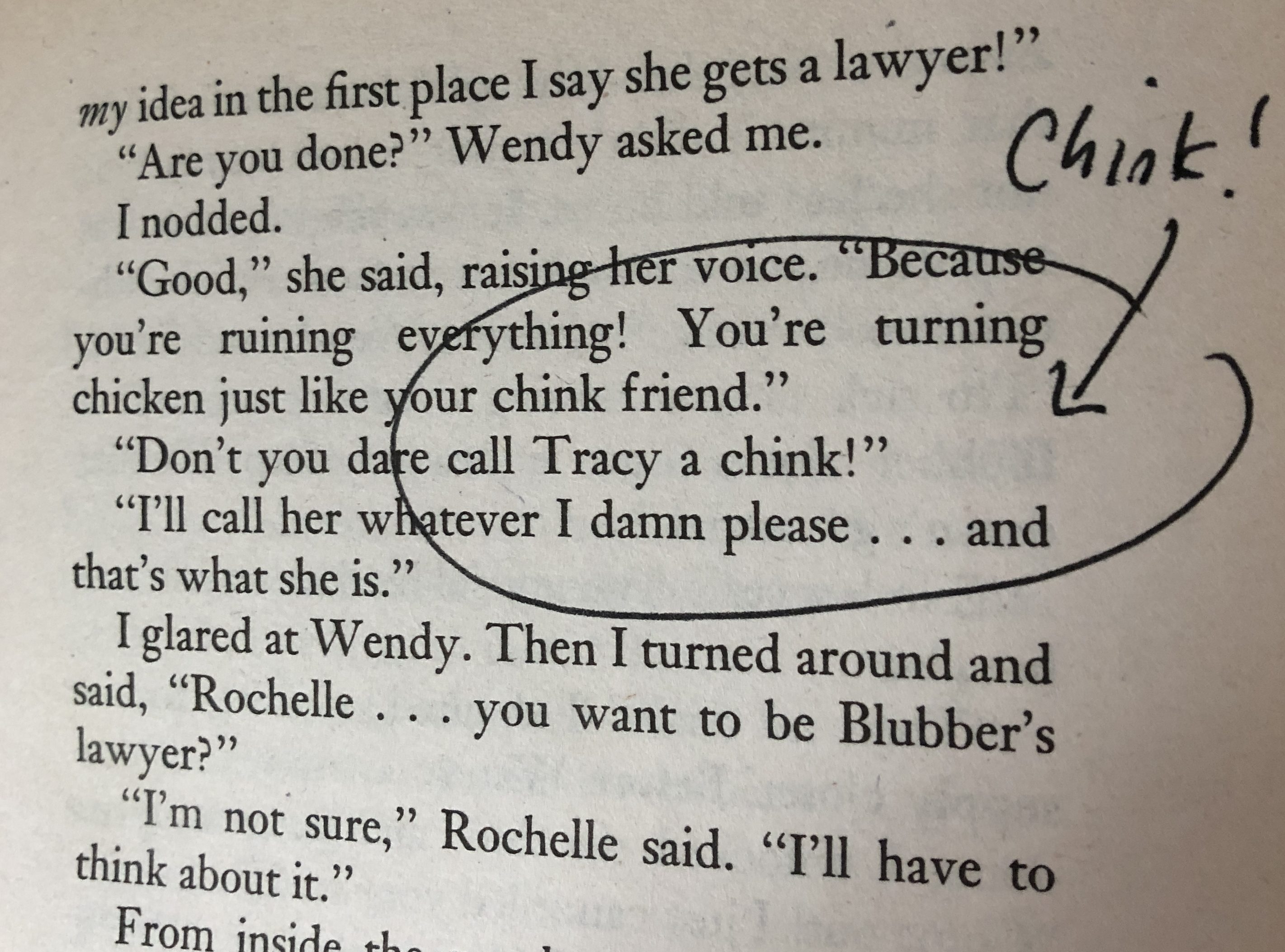
It’s only much later in the novel that Tracy gets called a “chink.” Because it seems to come out of the blue, it seems that much uglier. Very effective.
The ubiquitous bum costume
A lot of kids show up at school on Halloween dressed up like the homeless “bums,” complete with smudgy faces and bundled-up bandanas tied onto sticks. In fact, the hobo costume is so common among her peers that Jill deems it “nothing original.”
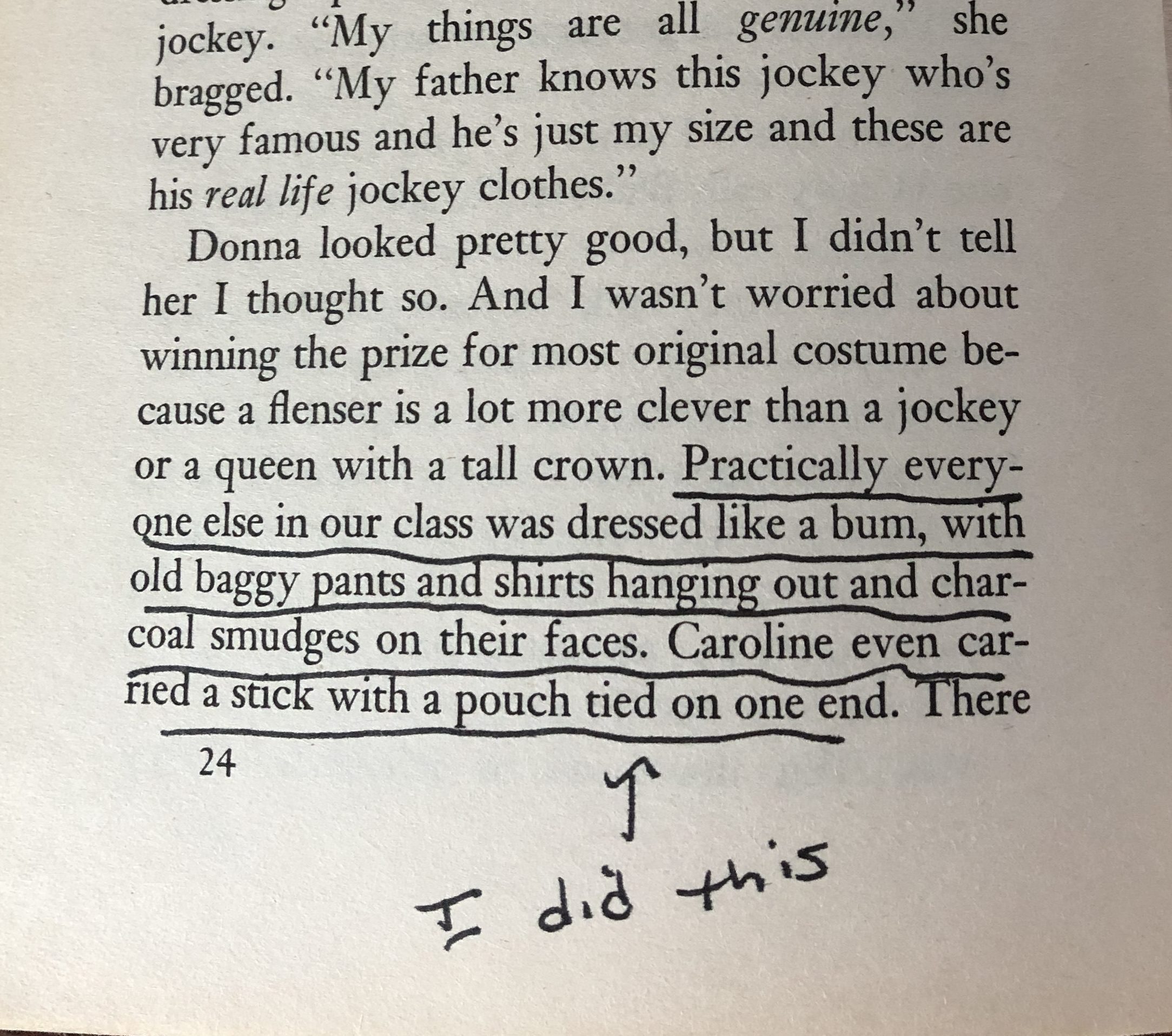 I remember dressing as a bum too. It was a very easy costume to pull off. Sometimes I’d just dress up like a bum for fun, even when it wasn’t Halloween.**
I remember dressing as a bum too. It was a very easy costume to pull off. Sometimes I’d just dress up like a bum for fun, even when it wasn’t Halloween.**
Young kids, sharp knives
Jill and her little brother (I think he’s nine) carve their own pumpkins every year. The jack o’lanterns usually turn out somewhat lopsided but nobody loses a finger and it is NBD.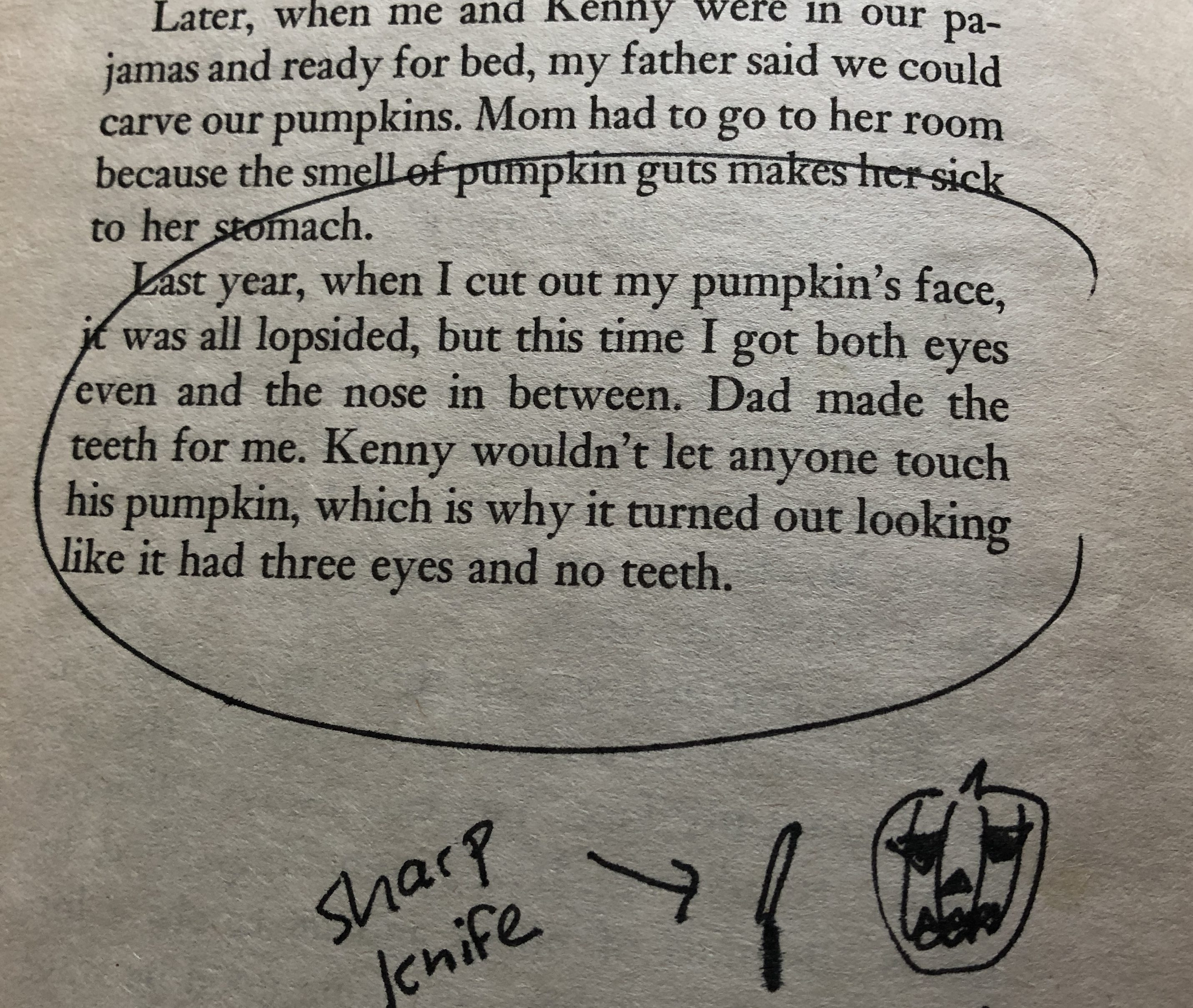 In my own household, this was the first year I let my 13-year-old carve our pumpkin all by herself. For this, I felt like I deserved a “daredevil mom of the year” award.
In my own household, this was the first year I let my 13-year-old carve our pumpkin all by herself. For this, I felt like I deserved a “daredevil mom of the year” award.
Jill is no bookworm.
If you ask me, there are WAY too many middle-grade books featuring earnest, deeply bookish protagonists who serve as stand-ins for the authors’ younger selves. For most kids, It’s impossible to relate to these nerds.
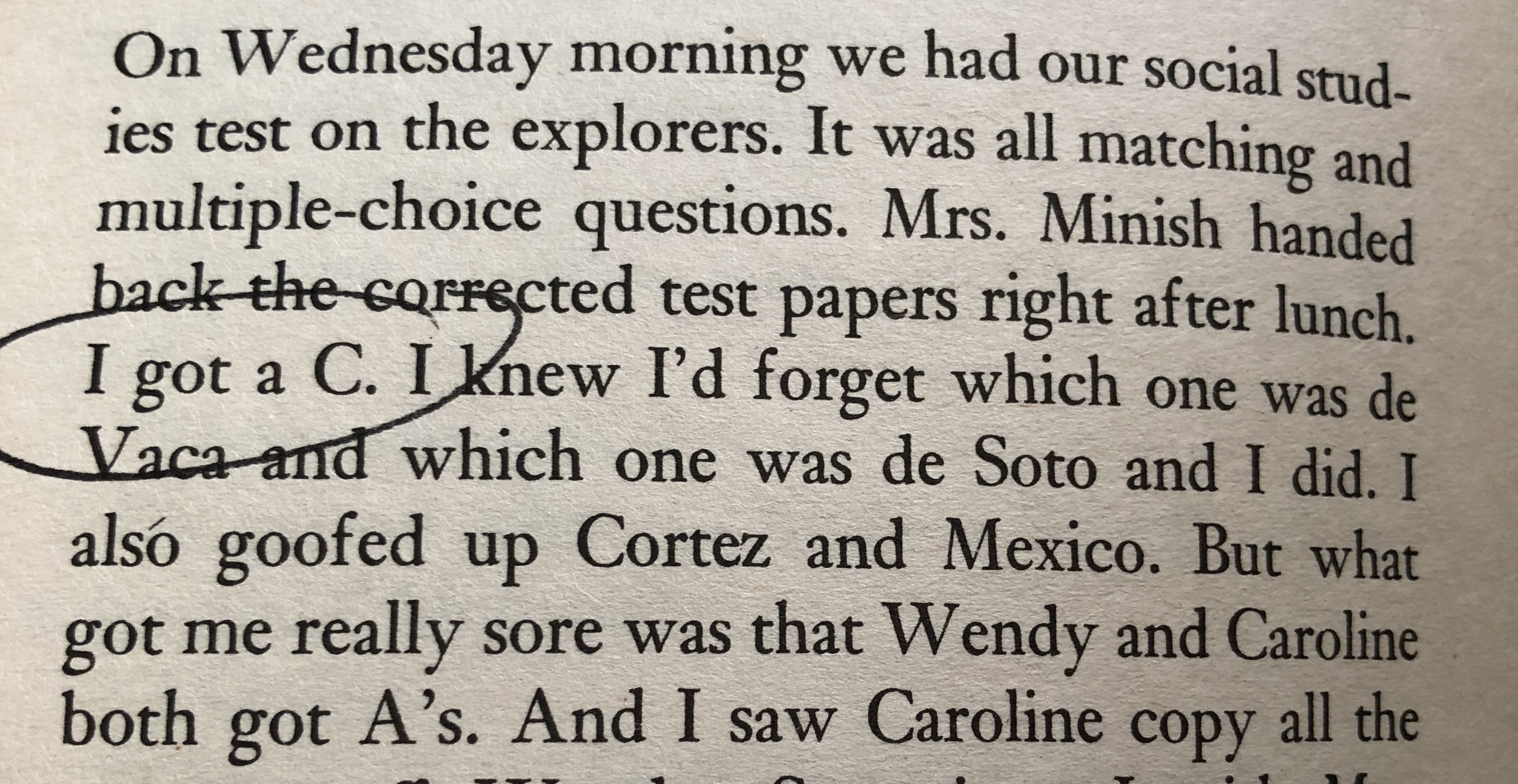 Blubber‘s Jill, on the other hand, is an all-around mediocre student who gets Cs in social studies and struggles in math. It’s the mean girls, Wendy and Caroline, who are the star students.
Blubber‘s Jill, on the other hand, is an all-around mediocre student who gets Cs in social studies and struggles in math. It’s the mean girls, Wendy and Caroline, who are the star students.
Who’s afraid of fifth grade girls? Me.
Chapter 11 is when the torturing of Linda goes from nasty to horrific. The girls make Linda recite “I am Blubber, the smelly whale of class 206” before they allow her to get a sip of water, use the bathroom, eat lunch or get on the bus. Bullying becomes a group activity the girls look forward to because it makes school life less “boring” for everyone. Blume lays bare the ugly truth that for some kids, sadism can be fun.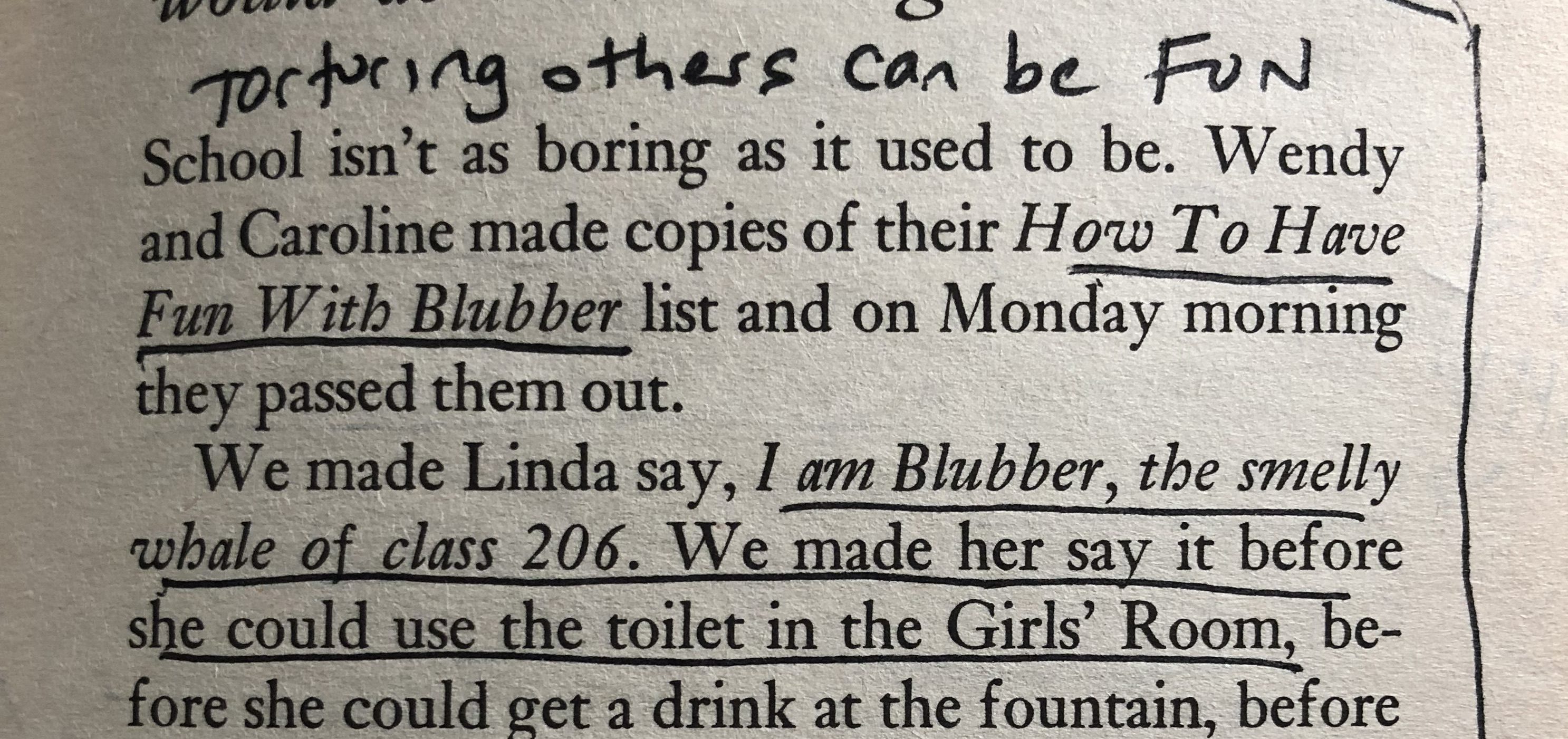 As a desperate survival tactic Linda even starts to volunteer these words before anyone makes her, in the hopes of appeasing her tormentors. This sounds like something straight out of a Maoist re-education camp.
As a desperate survival tactic Linda even starts to volunteer these words before anyone makes her, in the hopes of appeasing her tormentors. This sounds like something straight out of a Maoist re-education camp.
And nobody gets expelled?!
Just when you think it can’t get worse, shit gets even more twisted. The girls hold Linda down and force her to show the boys her underpants.
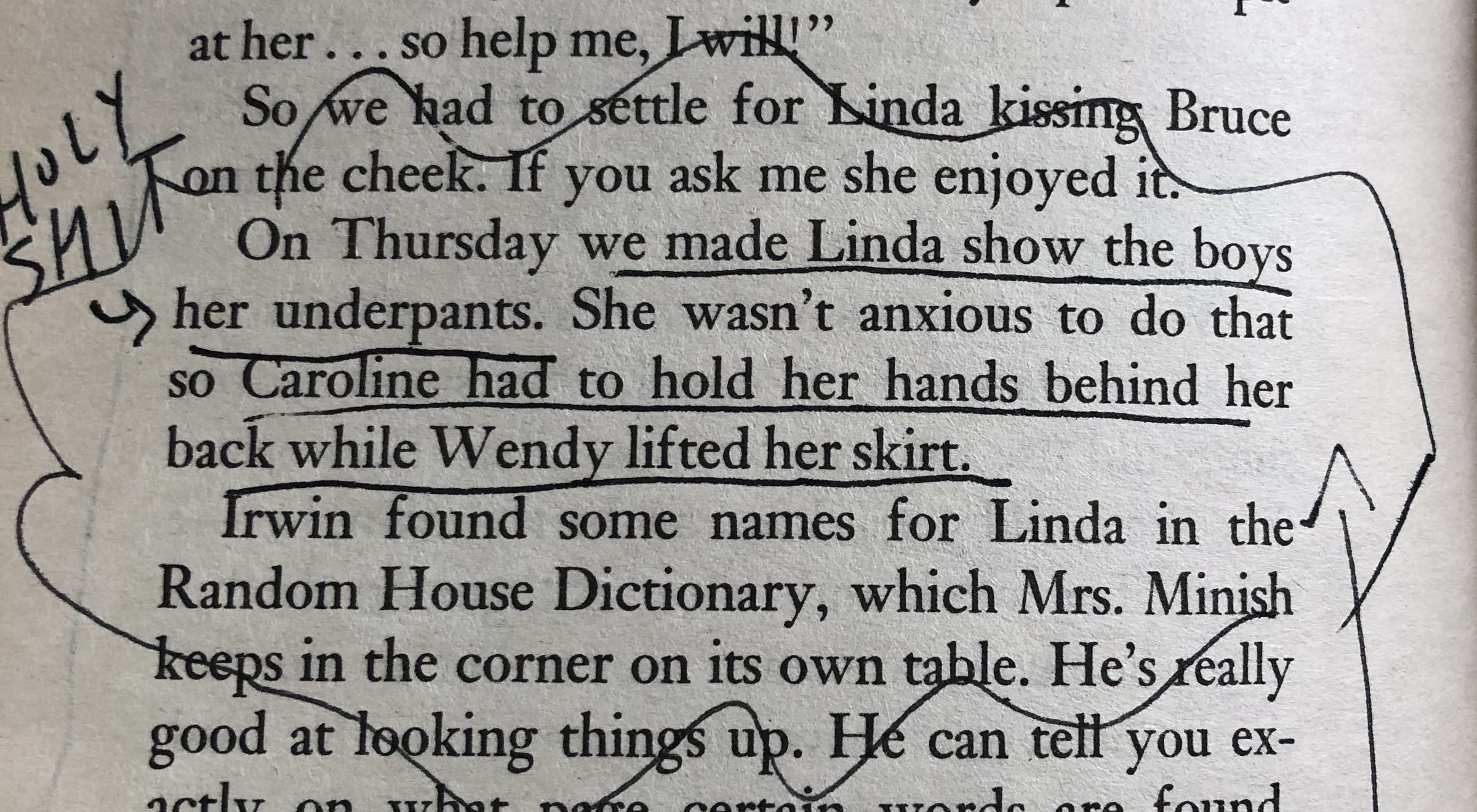 Then the girls pinch Linda’s nose closed and force-feed her a piece of candy that they tell her is a chocolate-covered ant. Wendy keeps her hand over Linda’s mouth “so she couldn’t spit anything out.” Linda gags and vomits.
Then the girls pinch Linda’s nose closed and force-feed her a piece of candy that they tell her is a chocolate-covered ant. Wendy keeps her hand over Linda’s mouth “so she couldn’t spit anything out.” Linda gags and vomits.
She is going to need years of therapy but these girls don’t even get detention.
Where are the adults? Ha!
Blume wrote Blubber years before Columbine, National Bullying Prevention Month, the movie Heathers or helicopter parenting. The adults in the book are absent, useless and blissfully oblivious to Wendy’s well-supported reign of terror. Although at one point it’s pretty clear that Linda has told her mother something about being picked on (she starts getting driven to school to avoid the bus) we never actually see her mom and the woman never raises a stink.
At one point halfway through the novel, Jill does bring up the situation with her mother in a roundabout way, telling her that there’s a girl who “lets everybody walk all over her.” Her mother says exactly what you’d expect: “You should try putting yourself in her place.” To which Jill responds exactly the way you’d expect: She ignores it.
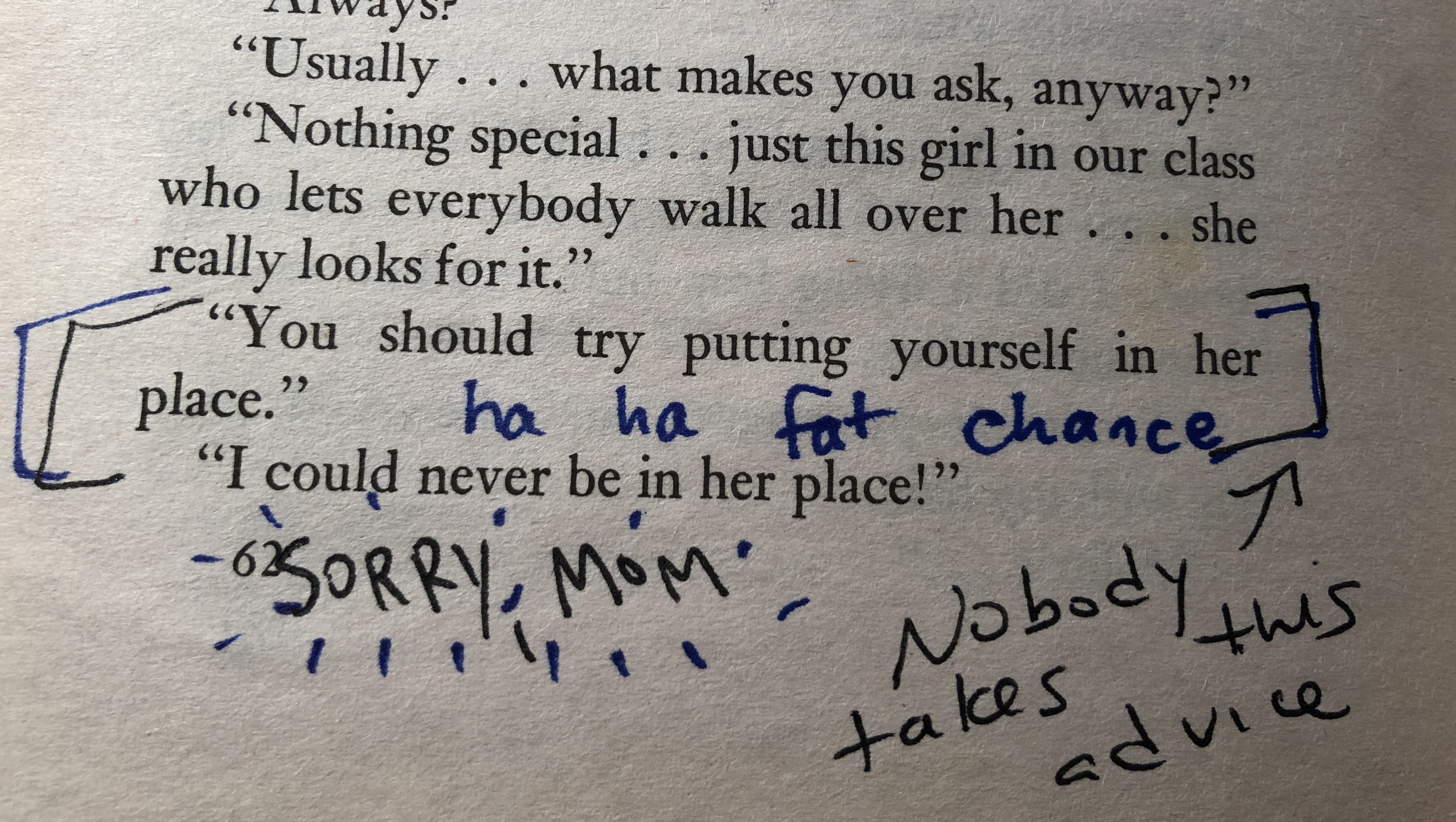 These days schools spend a lot of effort cooking up anti-bullying programs and kindness curriculums. But I can’t help but think that preaching this stuff to kids can be a waste of time. The advice goes in one ear and out the other, and the next thing you know some poor kid is getting a chocolate-covered ant shoved in her mouth. I desperately want to believe in the recent studies suggesting that people gain empathy through reading fiction. As a book lover, I’m surely biased, but it makes sense to me. Reading Blubber, Wonder or The Hundred Dresses has got to be more effective than telling kids to “try putting themselves in other people’s shoes.” I think Judy Blume, at least, would agree.
These days schools spend a lot of effort cooking up anti-bullying programs and kindness curriculums. But I can’t help but think that preaching this stuff to kids can be a waste of time. The advice goes in one ear and out the other, and the next thing you know some poor kid is getting a chocolate-covered ant shoved in her mouth. I desperately want to believe in the recent studies suggesting that people gain empathy through reading fiction. As a book lover, I’m surely biased, but it makes sense to me. Reading Blubber, Wonder or The Hundred Dresses has got to be more effective than telling kids to “try putting themselves in other people’s shoes.” I think Judy Blume, at least, would agree.
What do you think?
**As a reward for those of you who actually read to the end of this post, please enjoy this 1979 photo of me in my “bum costume.” 